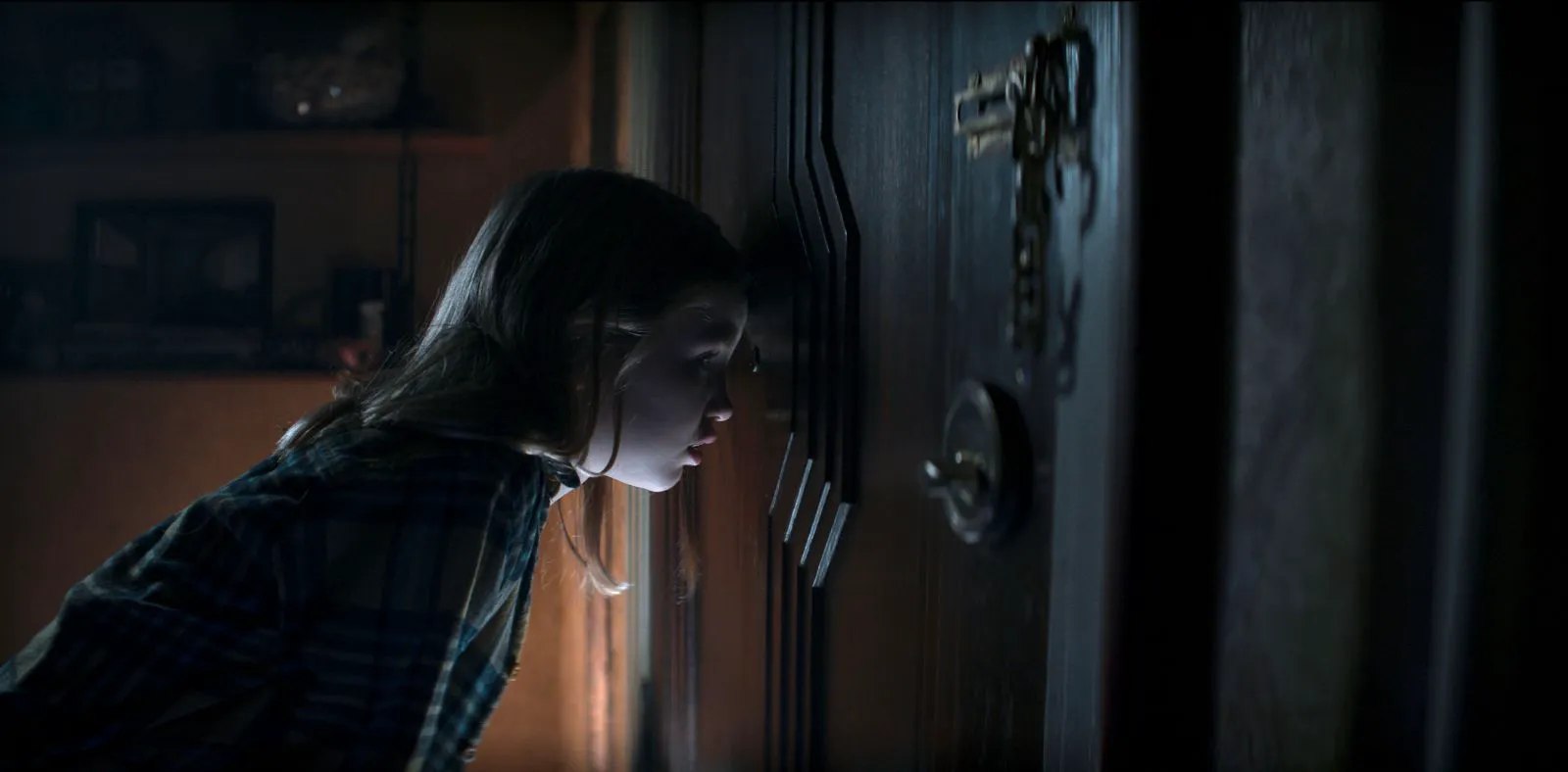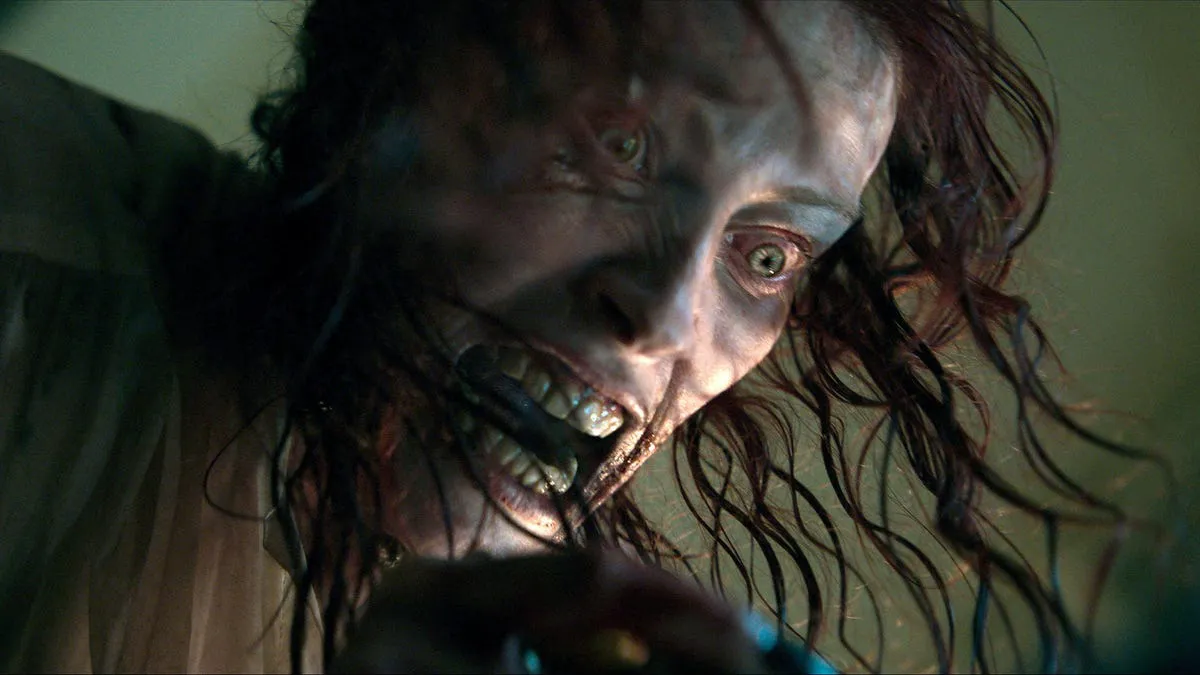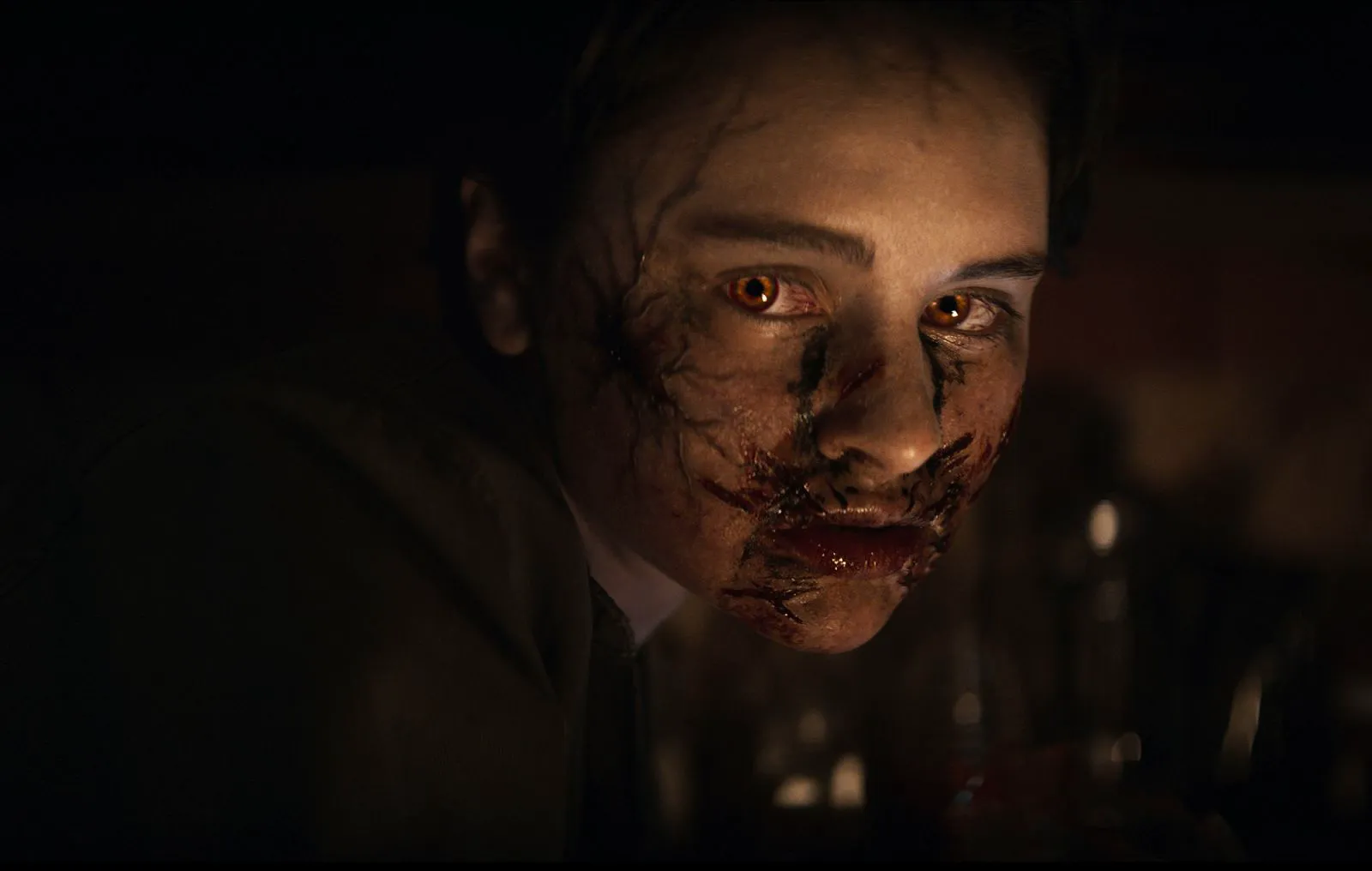Beth (Lily Sullivan) discovers she’s pregnant and goes to visit her older sister Ellie (Alyssa Sutherland). Ellie is a single mother raising three headstrong children. Circumstances lead the family to a secret vault in their apartment building, which is slated for demolition. In the basement lies a stack of deadly vinyl records and the Necronomicon, carelessly opened by a child, unleashing a series of nightmarish events. Demonic forces are unleashed, taking control of Ellie and plotting to destroy the entire family, trapped in the building.

Morgan Davies as Danny in a still from “Evil Dead Rise”
Ten years have passed, and the Necronomicon is open once again – in a recalibrated version of “Evil Dead,” which has now entered its third incarnation. Fans seem to have stopped getting frustrated and resigned themselves to the fact that there won’t be new “Evil Dead” movies from Sam Raimi like in the 80s, but the franchise has taken another turn after Federico Alvarez’s remake. If you think about it, regularly reinventing the wheel is nothing new for horror – “Scream” recently faced a similar multitude of lives, not to mention the legendary and obscurantist horror franchise that combined curses, zombies, and the heroic Ash with a chainsaw. Lee Cronin’s “Evil Dead Rise” is a “family” film, without any Ash, kitschy masculinity, or even the seemingly indispensable cabin in the woods.
A New Take on Terror

Alyssa Sutherland as Ellie in a still from “Evil Dead Rise”
Women rightfully lead this new version – an entire family of alternative girls, among whom the mother and her transformation into a mad, infernal entity undoubtedly take center stage. Alyssa Sutherland is a successful find, an actress who demonstrates how quickly one can transform from a compassionate patroness into a red-haired beast driven by an evil force. Equally important is that this whole bacchanal now unfolds in a multi-story building – meaning the authors have at their disposal not forests and swamps, but endless corridors, parking lots, and elevators, where they can experience all the wonders of the traveling camera.

Lily Sullivan as Beth in a still from “Evil Dead Rise”
Of course, you can’t completely eradicate the hack work from the new “Evil Dead” – the spirit of the franchise hasn’t settled in Cronin’s film, but rather is reproduced in nominal rituals. The redesigned book once again ruins people’s lives, demonic entities break down doors, and the film primarily communicates with the audience through audiovisual terror – intense sound and a kaleidoscopic change of shots. But “Evil Dead Rise” feels much more comfortable outside the franchise, independently exploring themes that Raimi didn’t want to touch – the vicissitudes of motherhood and the preservation of family as a matter of paramount importance. Now, in the chain of cursed events, there is no place for Ash, cutting up the dead left and right: protecting one’s child at any cost is heroism from the point of view of modernity, fleeing from the brutal kitsch of the 80s. Maternal and sisterly dynamics have a place, but as soon as the film goes into a bloody mess, the dramatic dimension becomes of secondary importance – Cronin, exactly repeating Raimi’s sequel, offers to enjoy slapstick and meaty choreography. It doesn’t turn out as funny and vigorous as one would like, and modern horror is a strange monster, trying to sit on two chairs: seriousness and uninterrupted irony. In the case of Raimi and even Alvarez’s remake, there were no such difficulties: in the first, irony ruled the material, in the second – a ringing seriousness of realism. The main problem: Cronin spends the entire hour and a half searching for his cozy place between Raimi and Alvarez, never figuring out what his “Evil Dead” is.
Gore and Grindhouse Aesthetics

Still from “Evil Dead Rise”
But in terms of genre tools, Cronin’s reboot certainly didn’t falter – the “Evil Dead” successfully realized all the decorative possibilities in creating infernal horror: gallons of blood were used, probably more than any modern horror film has ever used, and at one point everything alive in the frame turns into a kind of meat puppet – a successful bridge to the grotesque nightmares of Brian Yuzna. There is even its own answer to Kubrick’s “The Shining” with a bloody bath in the elevator – and in general, Cronin is not shy about playing with the vocabulary of American horror of the 70s, winking at “The Exorcist” (a semi-parody scene with a hint of exorcism) and “The Texas Chainsaw Massacre.” The best argument is still the good old chainsaw, setting the grammar of the plot, but it is not limited to it: all the necessary piercing and cutting objects are scattered throughout the timing, from a kitchen grater to scissors. The non-stop, partly careless to the narrative, splatter brings the plot to the level of body-oriented aesthetics, where only two things are important – how and where to cut best.
Overall, “Evil Dead Rise” looks like a grunge work, frankly uncomfortable, filmed almost like the perfect music video for alt-rock performers. To some extent, Cronin’s film was supposed to be an alternative, going to streaming services instead of cinemas (initially, “Evil Dead” was planned to be released on HBO Max), but the film was given a chance to enter the big theatrical arena. Critics were favorable to him – well, perhaps the new spell will really work and there will be no need to restart “Evil Dead” anymore.